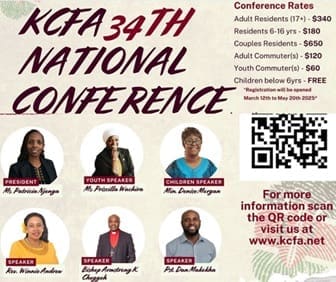
Nairobi is Kenya’s richest county while Turkana is the poorest, according a new report to be published Tuesday.
Counties in northern Kenya are among the poorest performers, according to the joint Kenya National Bureau of Statistics and Society for International Development (SID) report which reveals the stark inequalities between counties.
At the Coast, the best performing was Lamu, ranked sixth nationally, followed by Mombasa at number 10 nationally. Counties closest to Nairobi had a good showing with Kiambu and Kirinyaga being ranked at position two and three respectively.
The report also shows that Kenya’s overall poverty levels have fallen for the first time in nearly 10 years, though the drop is slightly. In Nairobi, for instance, just two in 10 people live in absolute poverty and cannot afford Sh2,913 per month.
The poorest county still remains Turkana where 88 per cent of the people there unable afford Sh1,562 per month. Turkana has been in the news in the last three days because four villages have been under siege following a boundary dispute with Pokot County.
The study titled Exploring Kenya’s Inequality: Pulling Apart or Pooling Together, shows that the number of people living in poverty has now gone down slightly to 45 per cent. This is a drop from the previous 46 per cent of the people who were living in poverty before the 2009 Population and Housing Census was conducted.
POVERTY LEVELS
A socio-economic research expert at SID, Ms Katindi Sivi-Njonjo, attributed the slight drop in poverty levels to the economic growth witnessed in the country over the last 10 years. But she warned that the drop may not have reflected recent changes in the economy brought about by the government’s move to revise tax laws.
“It is possible the drop is only in the percentage form but it may turn out that the actual numbers of people living in poverty is bigger given the country’s drastic rise in population,” she said.
According to her, the gains made in developing roads, Constituency Development Fund disbursements and improvement in the supply of electricity could have contributed to improved quality of life.
The country’s economic growth improved steadily to seven per cent in 2007 before falling after the aftershocks of that year’s post-election violence.
It has since registered some recovery and is expected to hit the regions of six per cent this year.
According to the new study, half of the people in rural areas are living in poverty. But the situation is better in urban areas where only three in every 10 people are poor.
This is as a result of the fact that many of the paying jobs are in urban areas, in what has been explaining the rural-urban migration trend.
Eight in every 10 people are poor in the poorest counties of Turkana, Mandera and Wajir providing a basis for the county governments to spend a lot of resources to reverse the situation. The counties are ranked 47th, 46th and 45th respectively. Other counties in the poorest five regions include Marsabit (44) and Tana River (43).
Following Nairobi in the rich list is Kiambu (2), Kirinyaga (3), Nyeri (4) and Meru (5).
The report’s ratings are different from those provided by the Commission for Revenue Allocation over the past two years which rank Kajiado as the richest county. Kajiado, which neighbours Nairobi, has now been pushed down 11 places to stand at number 12 in the new report. It has 38 per cent of the total population, or four in every 10, living in poverty.
It was not immediately clear whether differing methodologies between the Kenya Bureau of Statistics report and previous studies accounts for Kajiado’s drop in the wealth rankings.
“The incidence of poverty is higher in the northern and coastal regions of the country,” the report says. But the incidence of poverty “is significantly lower in others (regions), especially in Nairobi and the central region of the country”.
The study also shows that much more resources are needed to move the residents of rural areas out of poverty compared to those in urban areas.
Among counties, the highest amount of resources needed to pull poor people out of poverty is highest in Tana River. The least resources needed to move poor people out poverty is in Nairobi.
It shows that Kenyans living within the same region have completely different lifestyles and access to services. Magarini constituency in Kilifi county has 84.5 per cent of its population living in poverty compared with Rabai constituency in the same county where only 39 per cent live in poverty.







